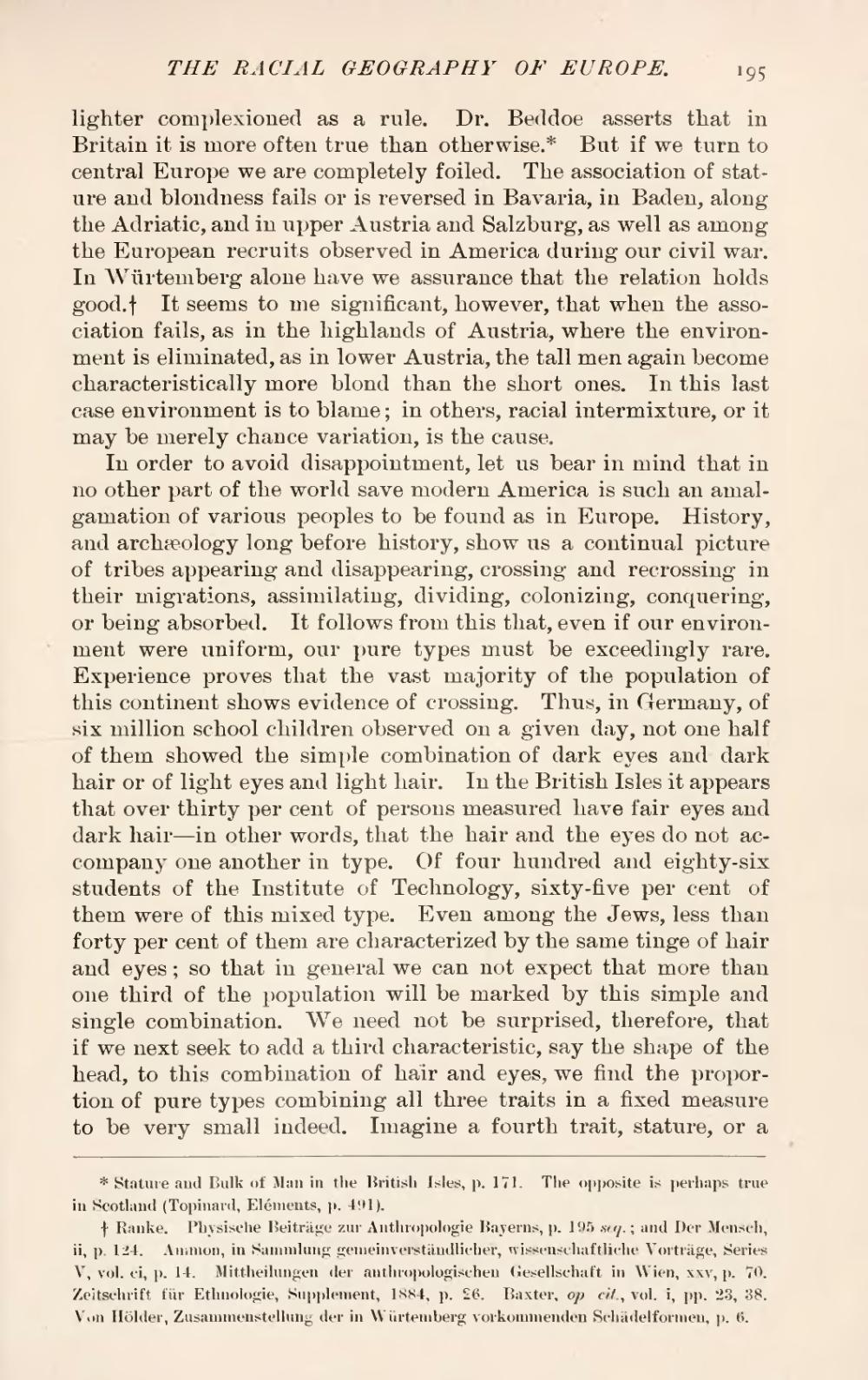lighter complexioned as a rule. Dr. Beddoe asserts that in Britain it is more often true than otherwise.[1] But if we turn to central Europe we are completely foiled. The association of stature and blondness fails or is reversed in Bavaria, in Baden, along the Adriatic, and in upper Austria and Salzburg, as well as among the European recruits observed in America during our civil war. In Würtemberg alone have we assurance that the relation holds good.[2] It seems to me significant, however, that when the association fails, as in the highlands of Austria, where the environment is eliminated, as in lower Austria, the tall men again become characteristically more blond than the short ones. In this last case environment is to blame; in others, racial intermixture, or it may be merely chance variation, is the cause.
In order to avoid disappointment, let us bear in mind that in no other part of the world save modern America is such an amalgamation of various peoples to be found as in Europe. History, and archaeology long before history, show us a continual picture of tribes appearing and disappearing, crossing and recrossing in their migrations, assimilating, dividing, colonizing, conquering, or being absorbed. It follows from this that, even if our environment were uniform, our pure types must be exceedingly rare. Experience proves that the vast majority of the population of this continent shows evidence of crossing. Thus, in Germany, of six million school children observed on a given day, not one half of them showed the simple combination of dark eyes and dark hair or of light eyes and light hair. In the British Isles it appears that over thirty per cent of persons measured have fair eyes and dark hair—in other words, that the hair and the eyes do not accompany one another in type. Of four hundred and eighty-six students of the Institute of Technology, sixty-five per cent of them were of this mixed type. Even among the Jews, less than forty per cent of them are characterized by the same tinge of hair and eyes; so that in general we can not expect that more than one third of the population will be marked by this simple and single combination. We need not be surprised, therefore, that if we next seek to add a third characteristic, say the shape of the head, to this combination of hair and eyes, we find the proportion of pure types combining all three traits in a fixed measure to be very small indeed. Imagine a fourth trait, stature, or a
- ↑ Stature and Bulk of Man in the British Isles, p. 171. The opposite is perhaps true in Scotland (Topinard, Eléments, p. 491).
- ↑ Ranke. Physische Beiträge zur Anthropologie Bayerns, p. 195 seq.; and Der Mensch, ii, p. 124. Ammon, in Sammlung gemeinverständlicher, wissenschaftliche Vorträge, Series V, vol. ci, p. 14. Mittheilungen der anthropologishcen Gesellschaft in Wien, xxv, p. 70. Zeitschrift für Ethnologie, Supplement, 1884, p. 26ü. Baxter, op cit., vol i, pp. 23, 38. Von Hölder, Zusammenstellung der in Würtemberg vorkommenden Schädelformen, p. 6.
